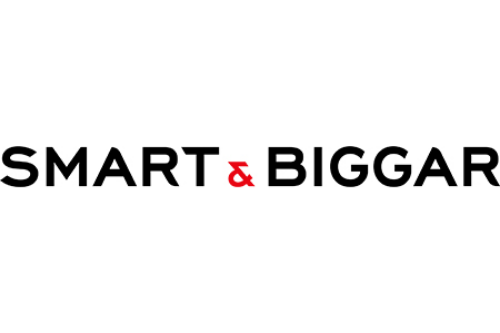This article was written by Daniel Anthony and Akiv Jhirad of Smart & Biggar LLP.
Background
Non-Fungible Tokens (NFTs) are the latest development in disruptive blockchain technology innovations, this time in the world of digital art, collectibles, and even luxury goods. Traditional auction houses have already started leveraging the technology, with one piece of digital artwork being sold for $69 million on Christie’s,1 and a visualization of the source code for the internet being sold for $5 million on Sotheby’s.2
Recent Articles
Luxury brands, like LVMH, are collaborating to develop the world’s first global luxury blockchain which utilizes NFTs.3 But what exactly are NFTs, and why are they currently drawing so much attention?
NFTs are digital tokens that can be used to represent ownership of unique digital assets on the Ethereum blockchain.
As the name implies, NFTs are “non-fungible” in that they are not interchangeable for other items because of their unique properties, similar to the ownership of a car with a unique Vehicle Identification Number. Any digital asset may be “tokenized” into an NFT through the “minting” process, which involves executing a piece of code (a Smart Contract) on the Ethereum blockchain to assign ownership and manage the transferability of the asset.
Ethereum is a blockchain platform with its own cryptocurrency, called Ether (ETH) or Ethereum, and its own programming language, called Solidity. As a cryptocurrency, Ethereum is second in market value only to Bitcoin, as of May 2021.
As a blockchain network, Ethereum is a decentralized public ledger for verifying and recording transactions. The network's users can create, publish, monetize, and use applications on the platform, and use its Ether cryptocurrency as payment. Insiders call the decentralized applications on the network "dApps."
As a result of the success and interest, several other blockchains are also now adding NFT functionality. A key characteristic of blockchains is that the record of ownership cannot be altered. As such, an NFT provides a verifiable and reliable claim of ownership over that tokenized digital asset.
Owning an NFT is not the same as owning the underlying digital asset.
Purchasers of NFTs should be aware that even though ownership of the authentic digital asset is established through ownership of the NFT, the digital asset itself may be viewed, downloaded, and enjoyed by anyone (for example, the artwork sold on Christie’s can be found online4 ). In fact, Christie’s conditions of sale clearly states:5
“Your purchase of the lot does not provide any rights, express or implied, in (including, without limitation, any copyrights or other intellectual property rights in and to) the digital asset underlying the NFT…” [emphasis ours]
Drawing parallels from the physical art world, owning an NFT is like owning a unique print of a piece of art signed by the artist, while multiple other individuals may simultaneously own identical unsigned prints. As discussed below, the artist retains the copyright in the underlying work.
Purchasing an NFT does not confer the underlying copyright in the digital work.
In Canada, for copyright to be transferred to the purchaser, the copyright owner of the work must provide an express written assignment. Such an assignment could optionally be included in the Smart Contract executed to mint the NFT, but this has generally not been the case to date. If the purchaser desires the copyright, due diligence will have to be conducted to ensure the contract includes such rights.
Read more about NFTs and their relationship to cryptocurrencies on the Smart & Biggar website.
5. Conditions for Sale for Christine's Inc
***
 Daniel Anthony, counsel in Smart & Biggar’s Ottawa office, specializes in all aspects of trademark and copyright law, with a particular emphasis on enforcement issues. He has a talent for connecting with clients and bringing clarity and efficiency to their most complex issues. He regularly advises clients, ranging from small-to-medium-sized enterprises to Fortune 500 companies, in the areas of trademarks and copyright law, including enforcement, dispute resolution, registration, strategic management, ownership and licensing. He is also one of Canada’s leading experts in intellectual property issues relating to the internet, social media and domain names and is sought out for his success in removing infringing content from the internet quickly and efficiently, regardless of jurisdiction.
Daniel Anthony, counsel in Smart & Biggar’s Ottawa office, specializes in all aspects of trademark and copyright law, with a particular emphasis on enforcement issues. He has a talent for connecting with clients and bringing clarity and efficiency to their most complex issues. He regularly advises clients, ranging from small-to-medium-sized enterprises to Fortune 500 companies, in the areas of trademarks and copyright law, including enforcement, dispute resolution, registration, strategic management, ownership and licensing. He is also one of Canada’s leading experts in intellectual property issues relating to the internet, social media and domain names and is sought out for his success in removing infringing content from the internet quickly and efficiently, regardless of jurisdiction.
Daniel is a member of IPIC’s and INTA’s Internet Committees. Daniel has written extensively, is regularly called on as a speaker within the profession and has been interviewed as a legal expert by the media for live radio and in print. BSc. (Cell Biology and Genetics); JD. Registered Trademark and Patent Agent. Called to the Ontario Bar in 2005.
***
A kiv Jhirad is an articling student in Smart & Biggar’s Toronto office. He received his Juris Doctor from The University of Western Ontario and was a member of Western Law’s dispute resolution centre, where he was trained in facilitative mediation and negotiation. He received the NSERC Canadian Graduate Scholarship while completing his master’s degree.
kiv Jhirad is an articling student in Smart & Biggar’s Toronto office. He received his Juris Doctor from The University of Western Ontario and was a member of Western Law’s dispute resolution centre, where he was trained in facilitative mediation and negotiation. He received the NSERC Canadian Graduate Scholarship while completing his master’s degree.
Akiv is an advisor for the ‘Innovators in Scrubs’ program at McMaster University, where he consults on IP issues faced by students innovating in the healthcare space. Further, Akiv is named as an inventor on a US provisional patent titled “Steerable Endovascular Catheter” for his contributions to developing a novel maneuverable catheter for use in endovascular surgeries. BEng. (Electrical and Biomedical Engineering); MASc. (Biomedical Engineering).





